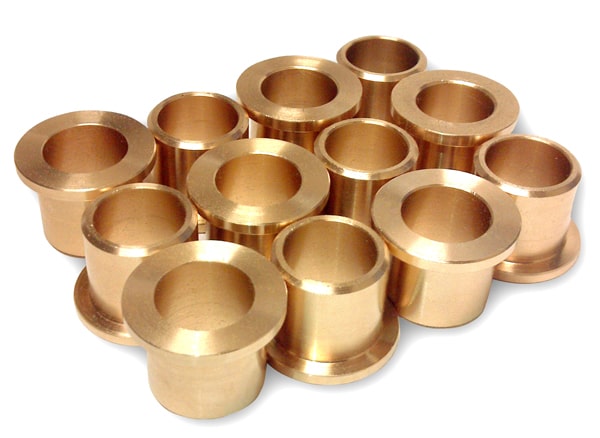Hiren Brass Products is a supplier of different types of casting components. We can accommodate a wide range of sizes and complex configurations. Our ISO 9001 certification is a testament to our company-wide commitment to the quality our customers have come to expect.
Types of Casting Processes
Investment Casting
Also known as lost wax casting, investment casting is an advanced metal forming process often applied in cases where both solid parts and complex, hollow cores are required. We create high-quality metal parts using disposable patterns that are particularly functional and cost-effective.
In the investment casting process, wax is injected into a metal die to make a pattern. This pattern is a replica of the part to be produced. The castings are then coated in ceramic, dewaxed, and heated to a high temperature – which depends on the alloy or metal used for the castings. The hot alloy then flowed into the hot cast shell. Any rest ceramic is blasted from the metal parts and scrapped. Our testing capabilities include a full physical, chemical, and non-destructive.
Sand Casting
A process typically relying on silica-based materials, the sand casting process involves finely ground, circular grains tightly packed together into a smooth molding level. It is a cost-effective process that can be produced in both small and large parts.
In sand casting, a wooden and metal pattern is used in combination with a sand core box to machine-cast parts and components. melted metal alloys are poured into a sand-cast mold to form the component. The sand is removed after the metal has cooled and the metal is then surface treated or blasted in some way to finish the machining process.
Die Casting
Die casting involves the molding of materials under high pressure and consists of a cold chamber, a hot chamber, and multi-slide hot chamber casting. Hot chamber die casting is generally used for the classification of magnesium zinc and other alloys with lower melting points. Cold chamber die casting is used for metals with a higher melting point, such as aluminum.
The three alloys mainly used in die casting are zinc, aluminum, and magnesium. These allow all to possess strong corrosion resistance, hardness, high strength, high thermal and electrical conductivity, and incredible EMI/RFI shielding properties.
There are several benefits to die-casting services, such as that they allow for the creation of complex shapes namely external threads. This can help to minimize secondary operations and can much lower production costs.
Die casting also provides:
- Improved production speed due to fewer steps from material to finished product.
- Reduced scrap metal
- Tight tolerances
- Variable wall thickness
- mprove product life
- Improved surface finish and stability
Permanent Mold Casting
Permanent mold casting is a process used in which permanent or reusable molds consist of mold cavities, machined into a metal die blocks, and appropriate for repetitive use. These molds help to shape the liquid-casting metals into the required part.
Permanent mold casting services help to maintain gross dimensional stability. benefits for machining, however, are smaller due to the finished casting being much closer to the final specification. This process creates castings that are compact, tighter, and stronger, requiring less finishing and surface treatment.
Plaster Casting
Plaster casting is a casting process similar to sand casting. Instead of using sand in the process gypsum, a mixture of water, and strengthening compounds are used.
Casting Industries & Applications
Casting can be used for a wide variety of industries including
- Medical
- Automotive
- Electronics
- Firearms
- Industrial equipment
- Telecommunications




